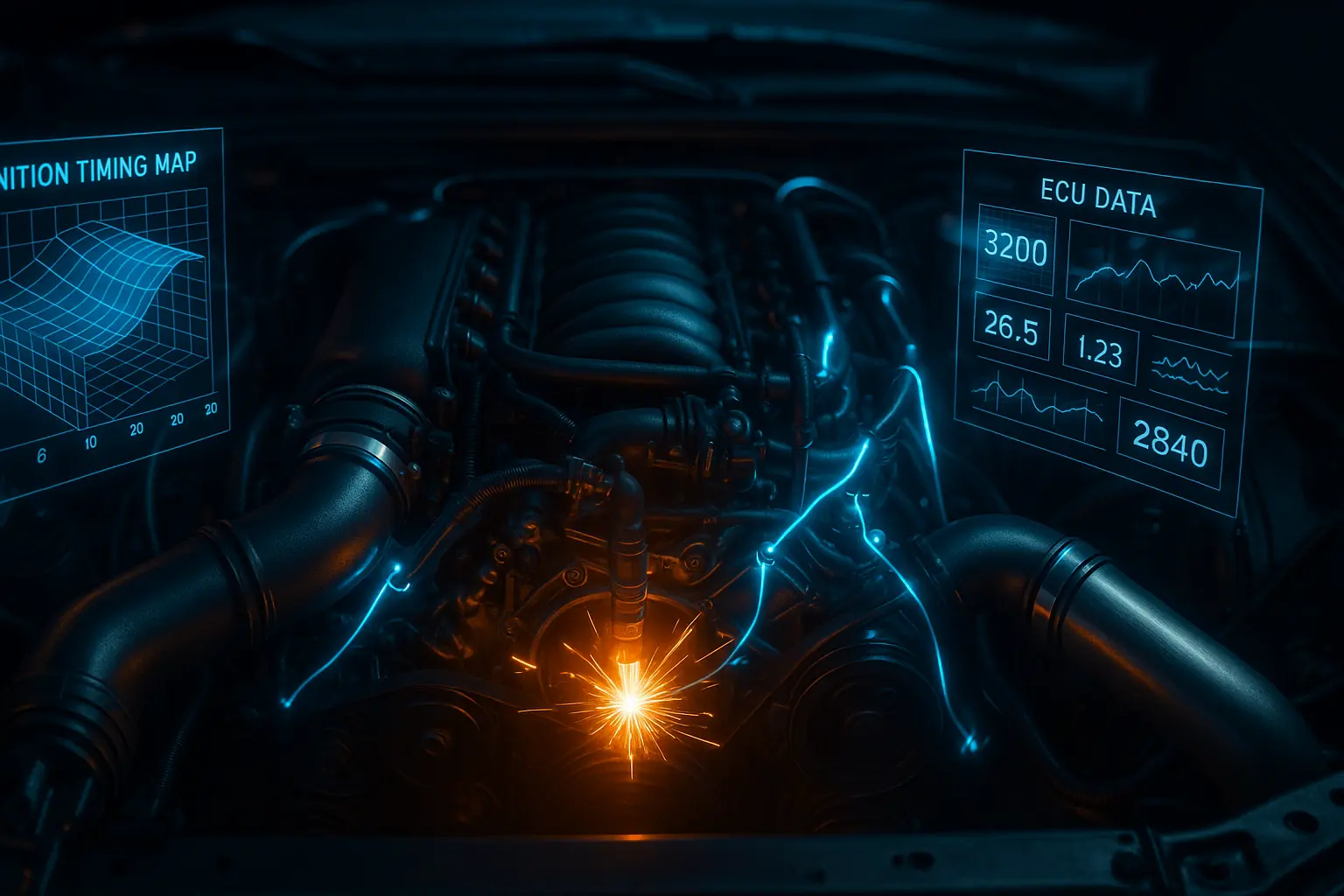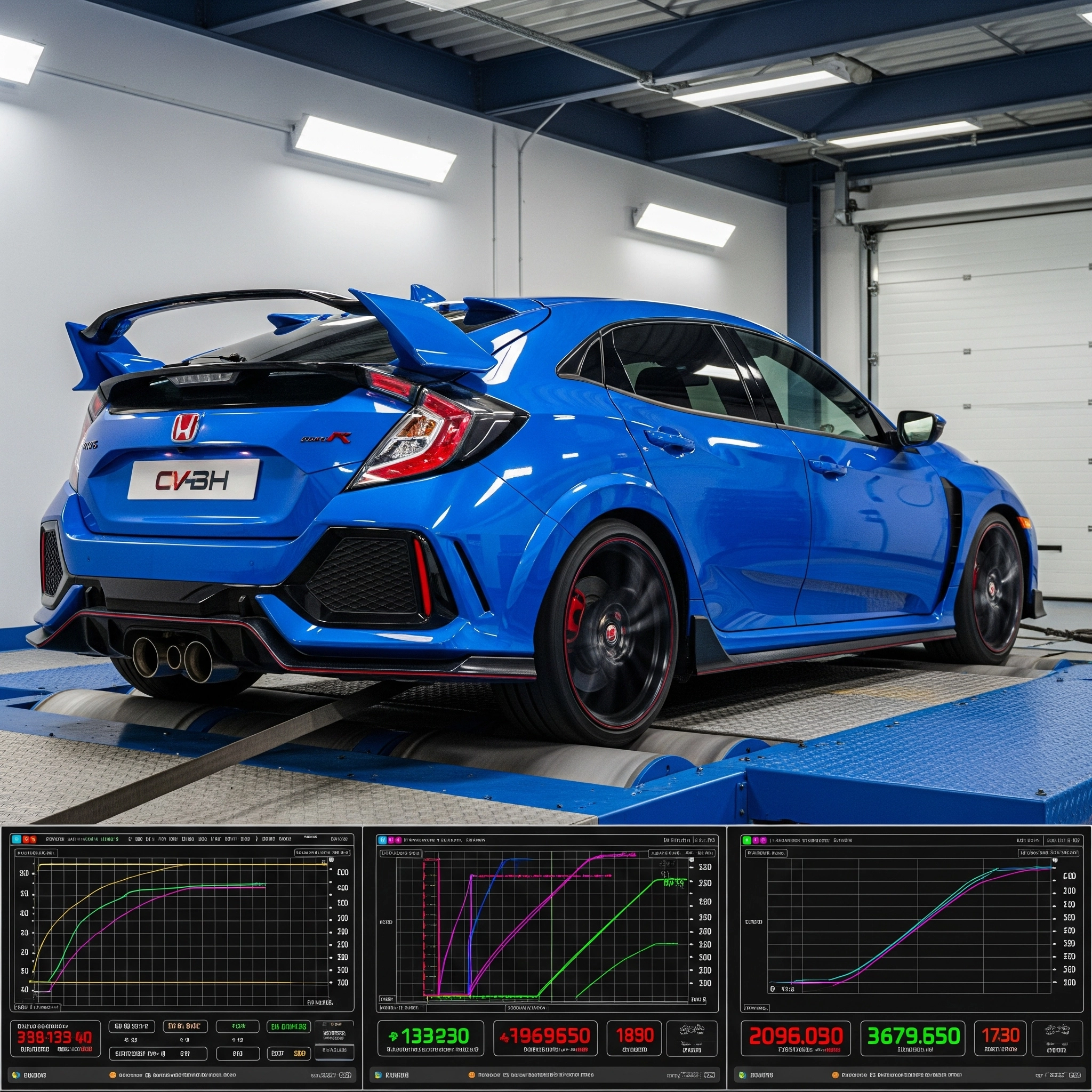Introduction: Why Ignition Timing Matters
Ignition timing is one of the most vital elements in performance engine tuning. It governs the precise moment a spark plug fires in relation to the piston’s position in the cylinder. When calibrated correctly, ignition timing maximizes engine output, fuel efficiency, and longevity. If misaligned, it can lead to poor drivability, wasted fuel, or even catastrophic engine damage.
Benefits of Optimal Ignition Timing:
Boosted horsepower and torque
Smoother throttle response
Enhanced fuel economy
Lower emissions
Reduced engine wear
Longer engine life
With today’s advanced Engine Control Units (ECUs), ignition timing is dynamically controlled based on inputs such as RPM, engine load, air intake, and temperature. ECU tuning allows these parameters to be customized—unlocking untapped performance tailored to your goals.
Understanding the ECU and Ignition Control
What Is the ECU?
The Engine Control Unit (ECU) is your vehicle’s brain, responsible for real-time engine management. It processes sensor data to control ignition timing and ensure efficient combustion across all operating conditions.
How the ECU Controls Ignition Timing
Modern ECUs use timing maps—3D tables that define when to trigger spark plugs based on RPM and engine load. Key sensors feeding this system include:
Crankshaft and camshaft position sensors
Knock sensors
Mass airflow and intake air temperature sensors
Throttle position and coolant temperature sensors
Oxygen sensors
Factory timing maps are intentionally conservative to support reliability, fuel variation, and emissions regulations—leaving room for safe, performance-oriented tuning.
The Science Behind Spark Timing
Combustion Dynamics
For peak power, the air-fuel mixture should reach maximum pressure at 15–20° after Top Dead Center (ATDC). Because combustion takes milliseconds to develop, the spark must fire before the piston reaches TDC—a concept known as spark advance.
Factors Influencing Optimal Timing
RPM: Higher RPM requires more advance due to shorter combustion time.
Load: Heavier load increases combustion speed; less advance is needed.
Air-Fuel Ratio: Lean mixtures burn slower (need more advance); rich mixtures burn faster.
Fuel Octane: Higher octane resists detonation—supports more advance.
Compression Ratio: Higher compression increases heat/pressure; usually needs less timing.
Combustion Chamber Design: Affects flame speed and ignition needs.
Intake Air Temperature: Cooler air is denser, affecting burn rate.
Detonation: The Hidden Danger
Also called knock or ping, detonation happens when the air-fuel mixture auto-ignites prematurely. This causes multiple flame fronts to collide, resulting in shockwaves that can destroy the engine.
Symptoms & Risks of Detonation:
Metallic pinging sound
Reduced performance
Broken piston rings or head gaskets
Catastrophic engine failure
Modern ECUs detect knock and automatically retard ignition timing to prevent damage—but smart tuning avoids even reaching that point.
Before You Begin: Tuning Prerequisites
Knowledge Requirements
Understand engine mechanics
Be familiar with your ECU system
Know how to interpret sensor data
Practice safe tuning techniques
Vehicle Readiness
Ensure engine is mechanically sound
Use the correct octane fuel
Fit fresh spark plugs (correct heat range)
Verify ignition system integrity
Confirm proper air-fuel mixture
Essential Tools & Software
ECU interface (e.g., OBD-II adapter)
Tuning software (HP Tuners, EcuFlash, Cobb AccessPort)
Wideband O₂ sensor for accurate A/F ratio
Knock detection tools
Datalogging system for real-time engine metrics
Step-by-Step Guide to ECU Ignition Tuning
1. Establish a Baseline
Record stock timing map values
Perform initial dyno pulls or acceleration tests
Log engine behavior across driving conditions
Document fuel usage for comparison
2. Research Factory Specs
Know OEM timing limits
Understand platform-specific quirks or safety margins
3. Initial Setup
Install and configure tuning software
Back up original ECU data
Locate and understand timing maps
4. Set Tuning Goals
Choose whether to prioritize:
Maximum power
Better mileage
Drivability balance
5. Adjust the Timing Map
Make 1–2° changes per cell
Focus on areas within typical RPM/load ranges
Test each change before moving forward
6. Validate and Refine
Monitor for knock
Check power and throttle response
Fine-tune map with 0.5–1° increments
Test under various temperatures and loads
7. Final Validation
Confirm gains with dyno runs or road tests
Observe cold-start, warm-up, and fuel economy
Perform emissions testing if required
Advanced Ignition Timing Strategies
Multiple Timing Maps
Some ECUs support:
Temperature-specific maps
Octane-selectable maps
Boost-based adjustments (for turbo/supercharged engines)
Dynamic Timing Adjustments
Intake temperature compensation
Adaptive learning from knock sensors
Altitude-based timing correction
Cylinder-Specific Timing
High-end ECUs allow precise spark timing per cylinder—helpful for:
Addressing uneven intake/cooling conditions
Managing knock-prone cylinders
Optimizing power distribution
Troubleshooting Common Timing Issues
| Issue | Symptoms | Fix |
|---|---|---|
| Detonation/Knock | Pinging under load, timing retard, power loss | Reduce advance, use higher octane, lower temps |
| Retarded Timing | Poor mileage, low power, hot exhaust, laggy throttle | Add advance, verify sensors, check for exhaust blockages |
| Inconsistent Timing | Surging idle, jerky power, throttle hesitation | Smooth maps, fix sensor faults, stabilize transitions |
Safety & Legal Considerations
Protecting Your Engine
Avoid large timing jumps
Monitor knock in real time
Be cautious in low-RPM, high-load scenarios
Environmental and Legal Compliance
Aggressive timing may increase emissions
Stay compliant with local ECU modification laws
Keep a street-legal tune for inspections
Top Tuning Tools & Gear
Professional Software
HP Tuners: Best for American vehicles
Cobb AccessPort: Ideal for Japanese/European sports cars
EcuFlash: Open-source option with community support
Monitoring Devices
AEM UEGO / Innovate LM-2: Air/Fuel Ratio
Knock Detection Systems: “Knock ears,” mics, or digital tools
OBD-II Scanners: For logging engine vitals
FAQs: ECU Ignition Tuning Explained
Is ECU tuning the same as “chipping”?
No. Chipping involved swapping hardware chips. Modern tuning reprograms the existing ECU software.
Can ECU tuning void my warranty?
Yes—if detected, manufacturers may reject warranty claims linked to modifications.
What performance gains can I expect?
Typically, 5–10% power increases from ignition timing optimization alone.
Do I need a dyno to tune?
Not necessarily. Street tuning is possible but requires proper tools and caution.
Can beginners do this?
Only if you’re technically confident. Otherwise, work with a professional tuner.
How often should I re-tune?
After any major engine change or if performance noticeably drops.
Conclusion: Fine-Tuning for Power, Safety, and Efficiency
ECU tuning for ignition timing is one of the most impactful adjustments you can make to enhance your vehicle’s performance, fuel economy, and responsiveness. It’s both an art and a science—requiring knowledge, patience, and precision.
With the right tools and techniques, you can transform a factory-limited tune into a custom-calibrated setup that reflects your exact driving goals. Whether you’re chasing lap times or better mileage, mastering ignition timing tuning will bring measurable gains and deeper insight into your engine’s inner workings.



